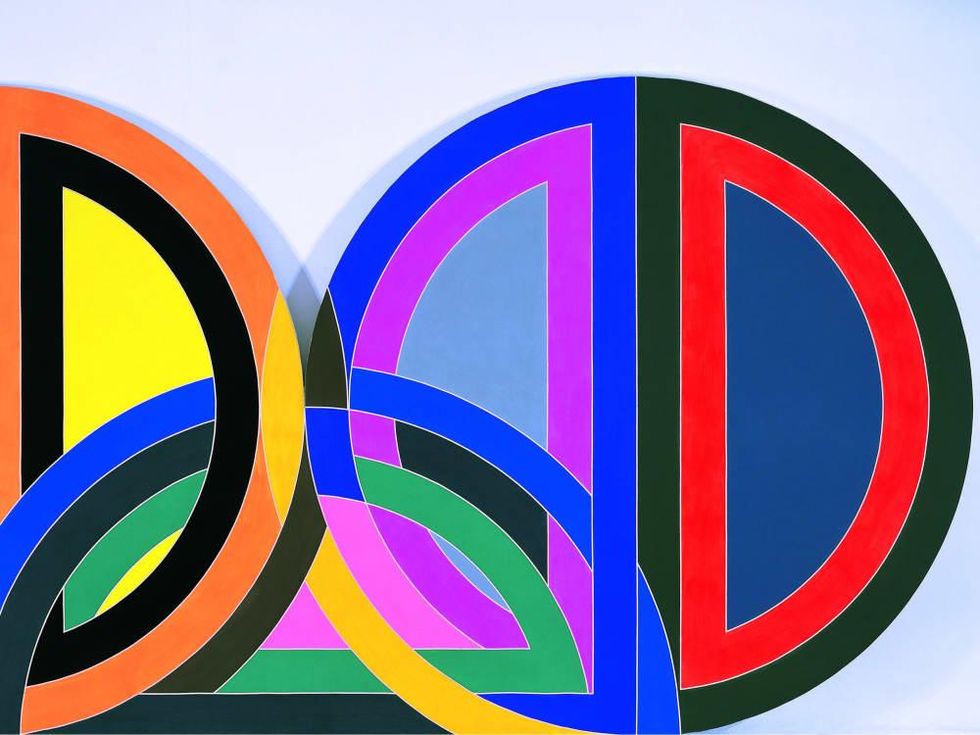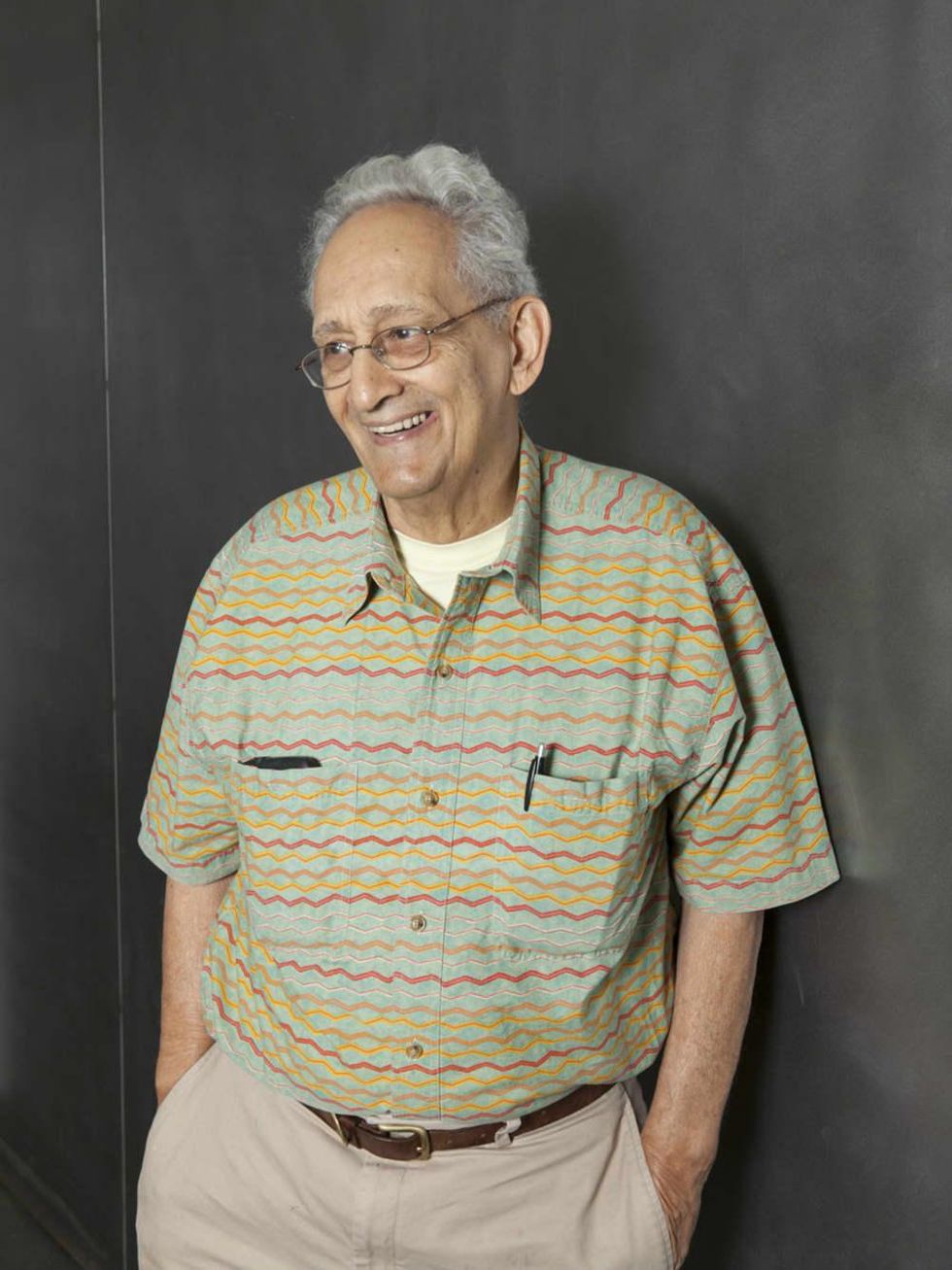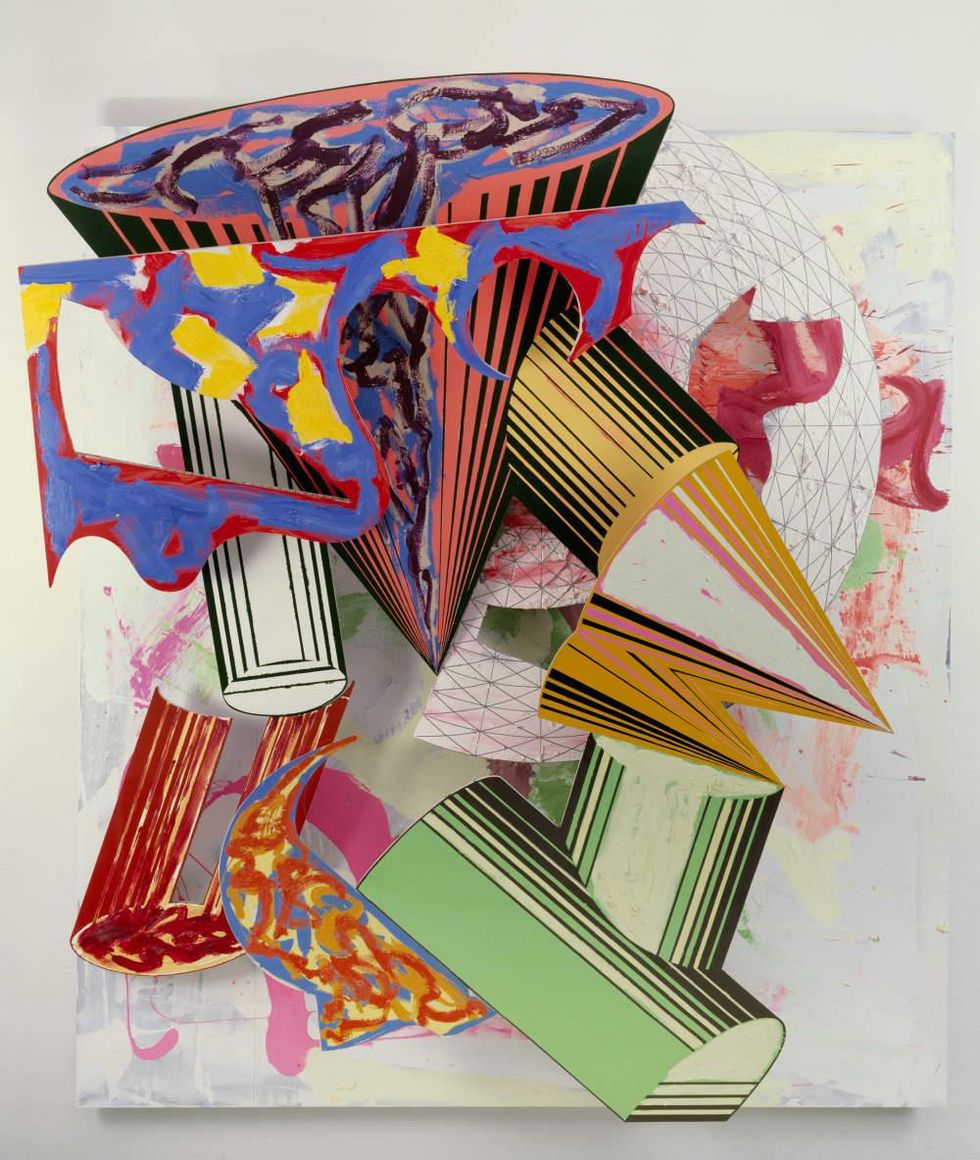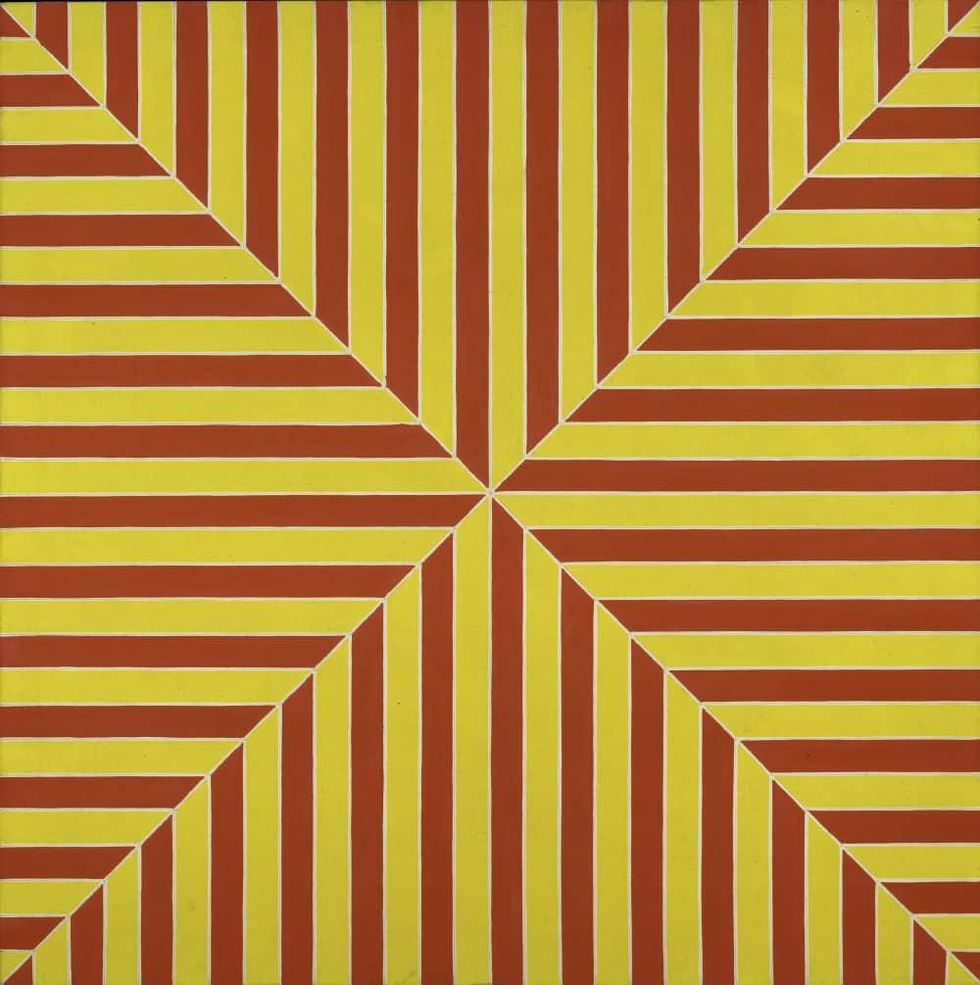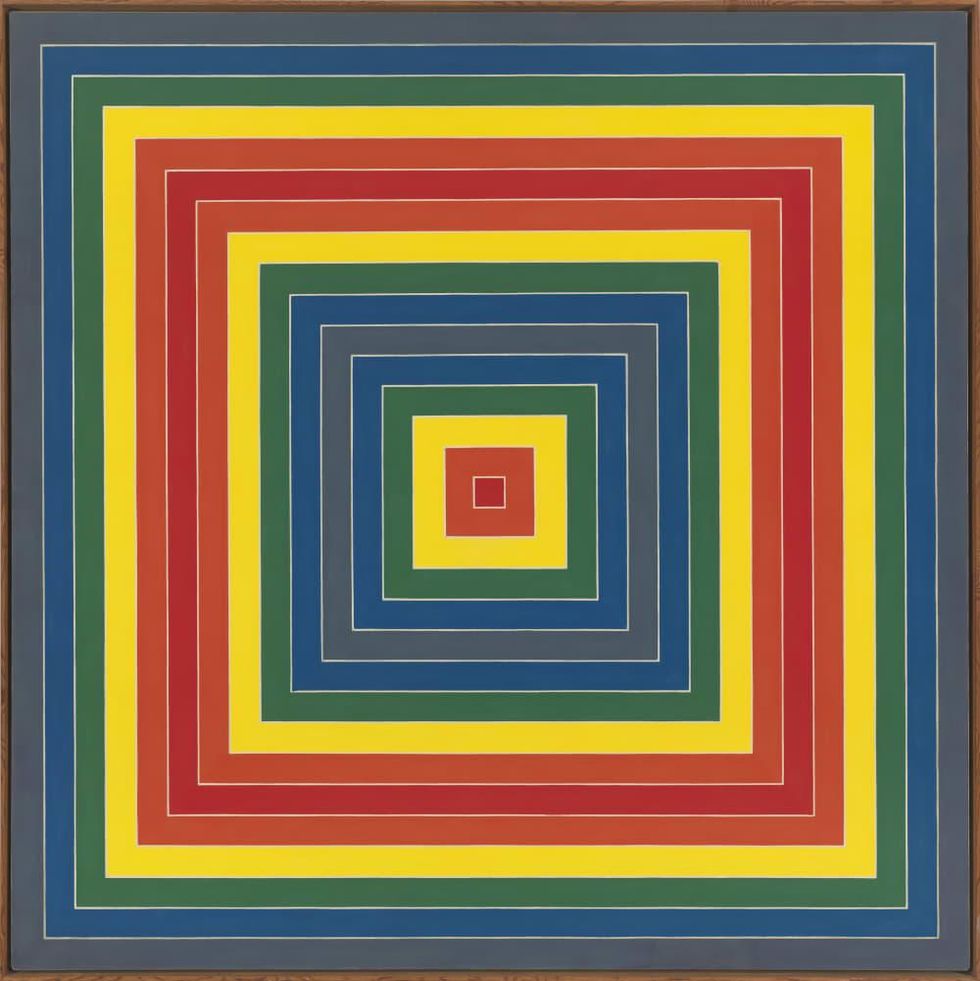Maximum Minimalism
Modern Art Museum of Fort Worth’s ambitious new retrospective honors living legend
There are few American artists as experimental and prolific as Frank Stella. From the 1950s onward, he moved deftly through material and genre as he almost single-handedly extended the lifespan of abstract expressionism. Which is why it is slightly surprising this living legend hasn’t had a comprehensive exhibition devoted to his work in years — until now.
Six years in the making, “Frank Stella: The Retrospective Works 1958-2012” began as a conversation between Modern Art Museum of Fort Worth chief curator Michael Auping and the artist.
“I first went to Frank and said, ‘Do you realize how long it’s been since you had a retrospective?’” Auping recalls. “When I first went to him, the first thing out of his mouth was ‘What’s in it for me?’ I just cracked up.
“Basically what he meant was, ‘I just want to make my work.’ I basically went ahead and started doing it, and he never stopped me. It was stunning to me he hadn’t had a major retrospective in so many decades, and I started doing the research and realized why it hadn’t been done.”
Winnowing down Stella’s cumulative body, with 45 different series, was a daunting task for any curator. Not to mention a true retrospective had to cover every phase of his output — from the legendary Black Paintings to the Copper and Aluminum series, to the Concentric Square pieces and later sculptural works that literally leap off the wall.
“For me, the Black Paintings were the Holy Grail of minimalism, but people much younger came into him when he was exploding painting in the ’80s. What I have found is people are very aware of the early work and his recent work, but most people have forgotten about the middle, and the middle is where so much happened.”
After taking a couple of years to digest Stella’s oeuvre, Auping collaborated with the Whitney to mount the show in the fall of 2015, the first exhibition of a living artist in the New York museum’s new downtown location.
Unlike the Whitney’s, Stella’s exhibition at the Modern, which opens April 17, has a slightly different focus, with more works (approximately 80 in all) taking center stage on their own, engaging a more critical eye. The artist joins Auping for a lecture on April 12, which can be viewed on YouTube a few weeks after his appearance.
“It’s going to be a bit more elegant here,” Auping says. “It will have a slightly different feel, in a good way. At the Whitney we had walls with openings on them, so whenever you looked at one work, at the corner of your eye you could see two others.”
Massachusetts-raised Stella’s combination of “blue collar practicality” and posh education — he honed his artistic development at Phillips Exeter and Princeton — led him to adopt a problem-solving approach to his work was both logical and innovative. It’s no wonder that through the years he’s been considered part of the movements of Minimalism, Abstract Expressionism, Russian Constructivism — even Cubism.
“He looks at all phases of art, and I think that gives him a grasp of the whole field of how pictures have been made from the very beginning,” Auping says. “It isn’t about creating a product for the market; he identifies a problem and works it through until he exhausts it, then goes somewhere else.
“It isn’t about genre for him, and it’s not about figure or narrative. It’s about what you can do with abstraction. He continually reengineered abstraction, and no artist has been that inventive in terms of their longevity.”
If there is a through-line in Stella’s work, it is spatial and gestural connections, as well as his almost aggressive use of color. As his scale expands — some of the works in the show are 30 feet long —and his materials diversify, Stella’s language of communication remains the same.
Still active in his acre-sized studio in upstate New York, the 80-year-old Stella hasn’t slowed down yet, and his legacy is such that he will still continue to affect artists, and art lovers, for generations to come.
“If you think of the major genres, it’s landscape, still life, portraiture then — boom — you have abstraction. It’s a relatively recent genre, but Frank has extended it the way Rembrandt extended portraiture,” Auping says.
“Younger artists are in a situation where they have one or two shows, and they’re wondering if something can be sustained. Here they have someone who has done it for 60 years. For an artist, it’s calming that this can be done. You just have to keep working, which is what Frank does.”
---
Tickets to the April 12 conversation between Frank Stella and Michael Auping can be reserved the day of at 10 am. “Frank Stella: The Retrospective Works 1958-2012” runs through September 18, 2016.

